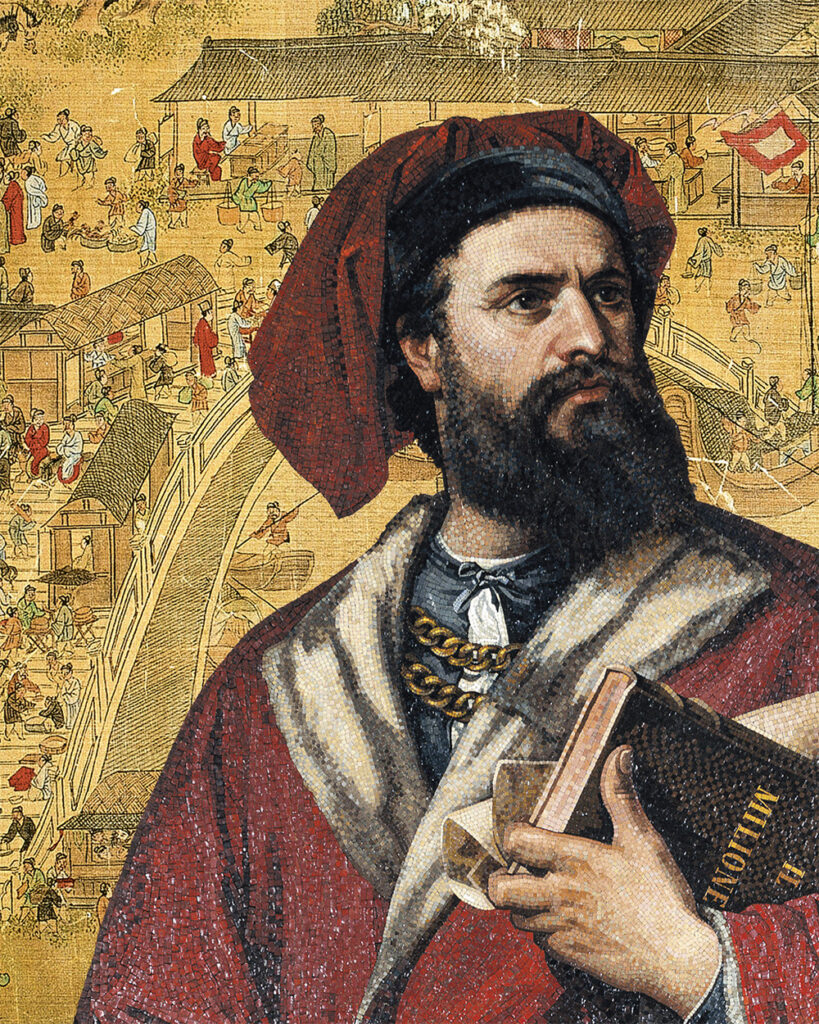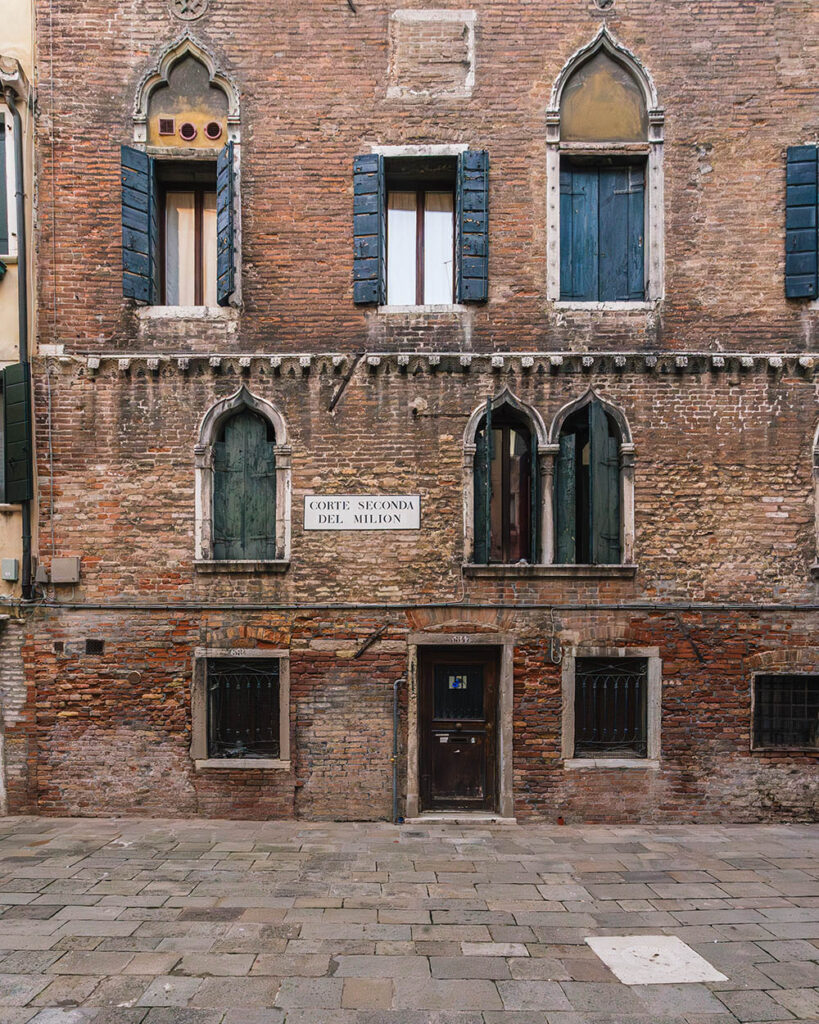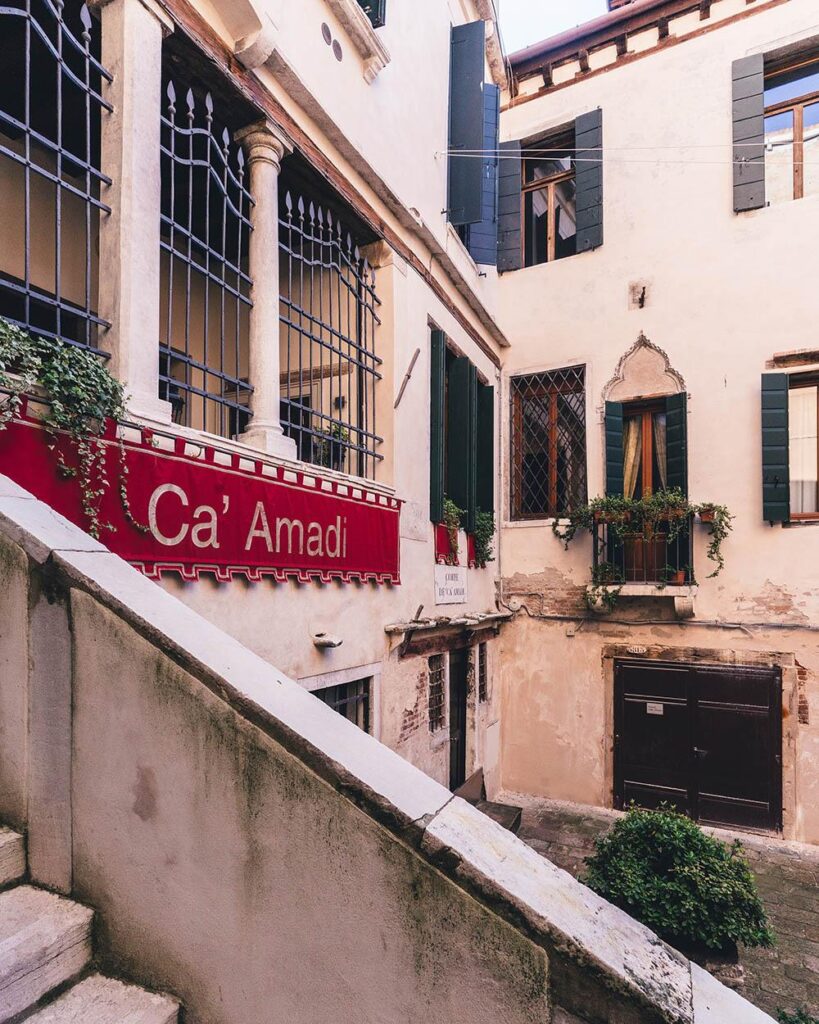Traveler, explorer, and merchant, Marco Polo was born in Venice, and it was from here that he set off on an amazing journey that took him to the Far East and made him famous.
This year, on the 700th anniversary of his death, the city celebrates him through major events, exhibitions, and workshops that we recommend, together with the rediscovery of Marco Polo’s Venice, where time seems to have stopped.
Discover it with us!

What did Marco Polo do that was important?
Marco Polo, born in Venice in 1254 to a family of merchants, is a figure of extraordinary importance in medieval exploration and trade.
His journey to the East, particularly to China, represents one of the most fascinating chapters of his life.
While his long stay in Asia, which lasted 25 years, allowed him to immerse himself in oriental cultures and traditions, and to recount extraordinary experiences and compelling adventures.
What distinguishes Marco Polo is, that in addition to having these incredible experiences, he also left a detailed account of his travels.
A fantastic novel: Il Milione
This tale was immortalized in his book “Il Milione”, also known as “The Book of Wonders”.
This work is a gripping narrative of his adventures along the Silk Road and in the kingdoms of Asia and is the first reliable and complete account of the Orient for a European audience.
The travel of Marco Polo
During his journey, Marco Polo gained the trust and respect of the Mongol Emperor Kublai Khan, becoming his advisor and playing important roles in the imperial court.
This experience enriched his knowledge of the Eastern world and the growth of relations between Asia and Europe, opening new trade routes and promoting cultural and commercial exchange between the two continents.
The return to Venice
Marco Polo’s return to Venice in 1295 brought an enormous wealth of knowledge and experience, and considerable fortune accumulated through his business and adventures in the East.
His nickname “Million” is a tribute to the riches and wonders he brought from the distant Asian land.
Although his life was not without difficulties and obstacles, as demonstrated by his imprisonment in Genoa, Marco Polo transformed even this experience into an opportunity to share his stories with the world.
His fellow prisoner, Rustichello da Pisa, helped him transform his memories into a literary narrative that would fascinate and inspire generations of readers worldwide.
Marco Polo today remains an icon of exploration, trade, and culture, whose contribution to mutual knowledge between Asia and Europe is still recognized and celebrated.
His life and travels continue to inspire the imagination and enchant the hearts of those fascinated by the magic of adventure and discovery.
Marco Polo’s places
From Cannaregio to San Marco, from Castello and San Polo: a short tour of where he lived and where he left evidence of his Venetian life.

Sotoportego del Milion, Corte Prima del Milion, Corte Seconda del Milion
A stone’s throw from Ca’ Amadi, some places recall the presence of Marco Polo in the city.
Named after il Milione, Marco’s nickname and the title of the book that gave him fame, they are part of a small area of Venice, where the life of Marco’s family took place and where he seems to have lived too, in Corte Seconda del Milion, remembered with a small plaque.
Ca’ Amadi, once owned by Marco Polo’s family
Even Ca’ Amadi, before being purchased by Count Francesco Amadi, was part of the properties of the Polo family and it can be said that our guests stay in a house once owned by Marco Polo’s family.

Church of San Giovanni Elemosinaro
Once upon a time, at the Serenissima period, at the entrance to the church of San Giovanni Elemosinaro in the San Polo district, a copy of Il Milione was placed, suspended with a chain.
The book was supposed to represent a source of knowledge, accessible to every passerby wishing to learn more about Marco Polo’s adventures.
Marciana National Library in Piazza San Marco
Marco Polo’s will is kept in the splendid Marciana Library, a fascinating and precious document on sheep’s parchment, dating back to 1323.
The document, probably drawn up by a notary of the time, was fundamental in reconstructing the life and personality of the Venetian merchant.
It contains the last wishes expressed by Marco Polo, among which the traveler’s extreme generosity is surprising, where we read of his intention to grant freedom to his slave of Tartar origin and give him property.
Church of San Lorenzo in Castello
According to ancient chronicles, Marco Polo was undoubtedly buried in the family tomb in the San Lorenzo church, in the charming Castello district.
Unfortunately, the funerary monument has been lost due to the numerous renovations that have affected the church over the centuries.
The Venice “Marco Polo” International Airport”
The main airport of the Serenissima could only be dedicated to the great traveler, explorer, and narrator of distant worlds.
Built in 1958, rebuilt and expanded in 2002, and subsequently in 2018, Venice Marco Polo Airport is today a splendid terminal: what better welcome for travelers from all over the world who choose to come to Venice!
You can easily reach from Marco Polo airport to Ca’ Amadi with the Alilaguna shipping line, orange line, which stops in Rialto, a 5-minute walk from Ca’ Amadi.
Celebrations in Venice 700 years after the death of Marco Polo
Throughout 2024, Venice will dedicate exhibitions, events, and artistic workshops to the great Venetian traveler Marco Polo. It was a fascinating journey to discover one of the greatest explorers.
Marco Polo at the Doge’s Palace

The exhibition at Palazzo Ducale, entitled “The Worlds of Marco Polo: The Journey of a Venetian Merchant in the Thirteenth Century”, will be held from 6 April to 29 September 2024.
It presents over 300 works from Venetian collections, the main Italian institutions, and European ones, together with loans from museums in Armenia, China, Qatar, and Canada.
Works of art, archaeological finds, artifacts, and insights into the literary works of the Venetian merchant allow us to explore the physical, political, and human geography of his travels in Asia.
Particular attention is paid to “Il Milione”, with an in-depth study of its worldwide diffusion in the 19th and 20th centuries, as well as the influences of the figure of the merchant and his adventures in contemporary art.
Marco Polo in Venice at the Palazzo Mocenigo Museum
Until March 3, 2024, it will be possible to visit the exhibition “The Axis of Time: Silk Clothing Fabrics from Suzhou”, which presents original creations, fabrics, and replicas of ancient clothes.
The exhibition offers an in-depth look at the thousand-year-old technique that made silk from the Chinese region of Jiangnan famous, much admired, and mentioned by Marco Polo in “Il Milione”.
Subsequently, from 29 April to 30 September 2024, stage costumes and sketches from the memorable 1982 Rai international production of the drama “Marco Polo” will be displayed.
The Museo Correr
In October, the usual appointment with calligraphic art is dedicated to Marco Polo. There will be workshops and an exhibition entitled “Journey through the Writings: the calligraphic cultures encountered by Marco Polo”.
A special opportunity to try your hand at the ancient art of calligraphy.
Come and discover Marco Polo’s Venice with our special offers
It’s so excited to travel!
The encounter with different cultures, art, and traditions always enriches, and this is why we offer our guests, at any time of the year, the best rates and exclusive special offers, available only on our Official Website, to make a trip to Venice.
Choose the offer here, and enjoy Venice like a contemporary Marco Polo!